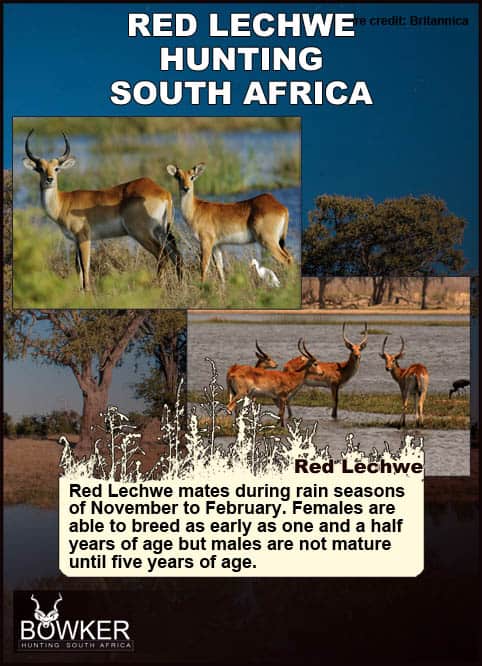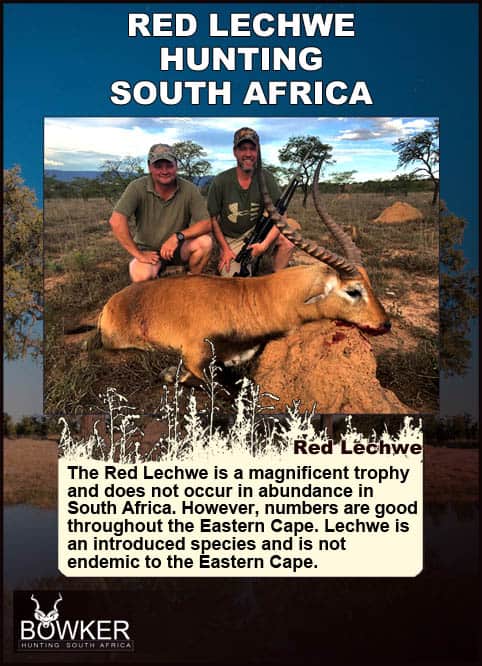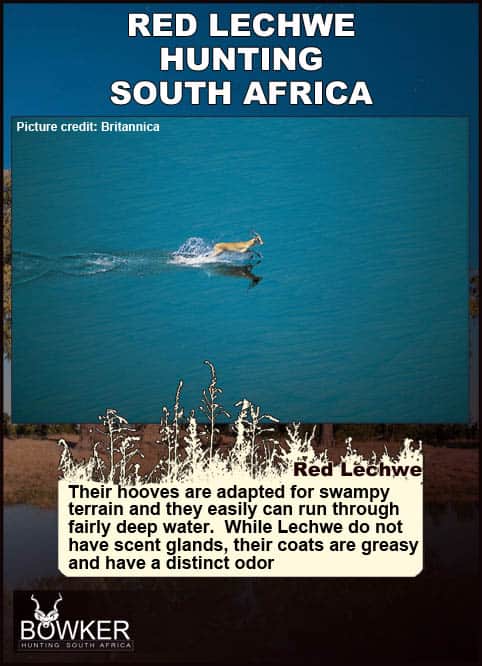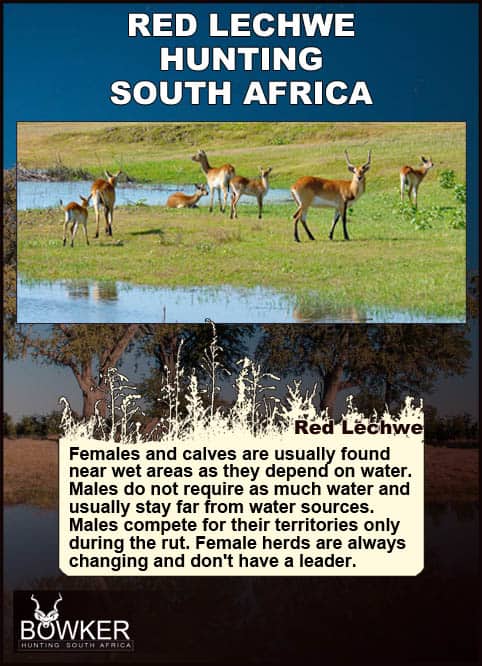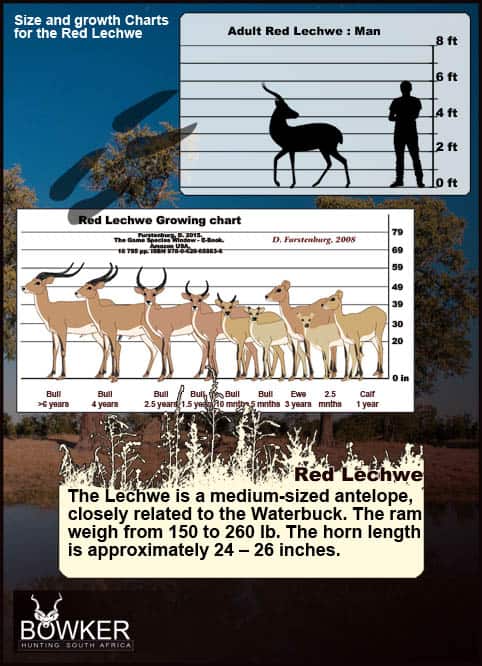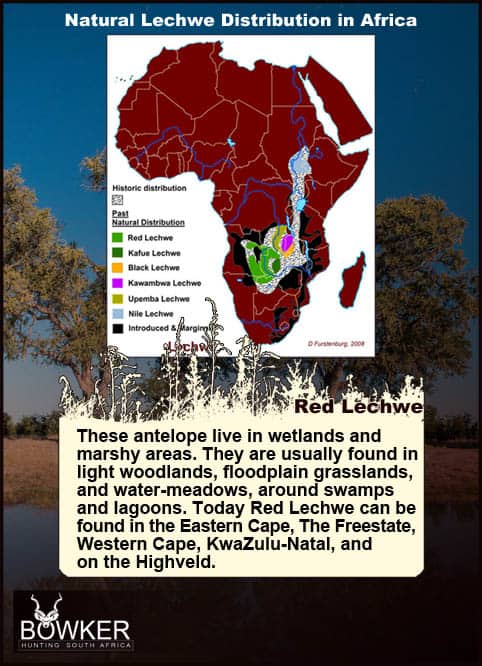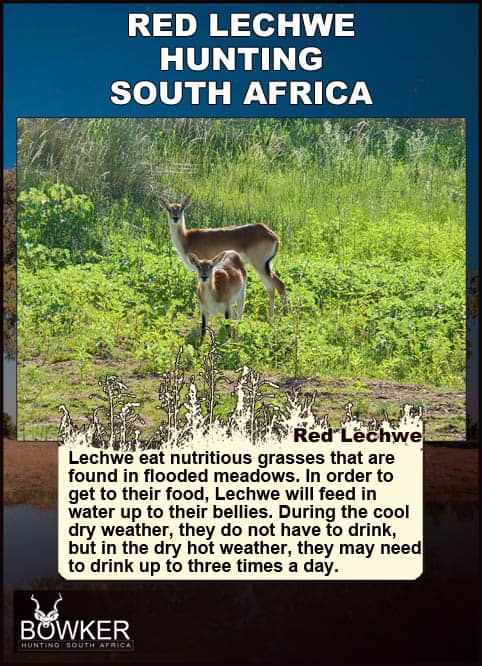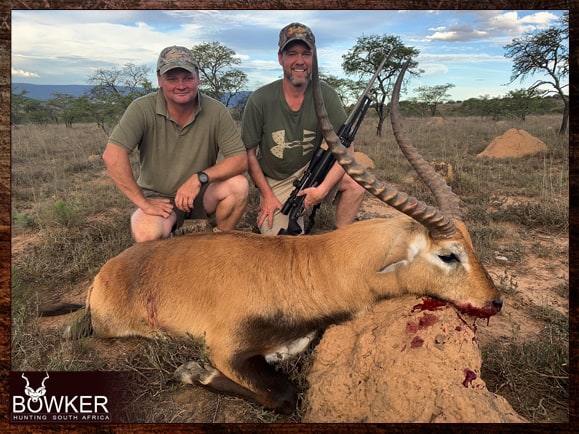
Summary
Red Lechwe Trophy hunting is a must for any African hunt safari. Four subspecies of these game antelopes have been identified in Africa.
Only Red Lechwe is available in South Africa to hunt.
Lechwe has no seasonal hunting restrictions in the Eastern Cape. Nick Bowker Hunting offers Lechwe African hunting trips year-round.
Lechwe is a magnificent hunting trophy. Only the male carries horns, which sweep backward and then curve forward at the horns’ tips.
Lechwe hunting takes place in the woodlands and savanna.
Stay at Hopewell Lodge and game hunt Lechwe free range with Nick Bowker in Africa.

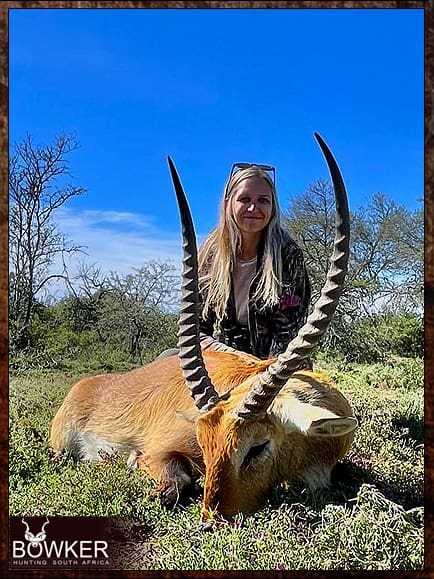
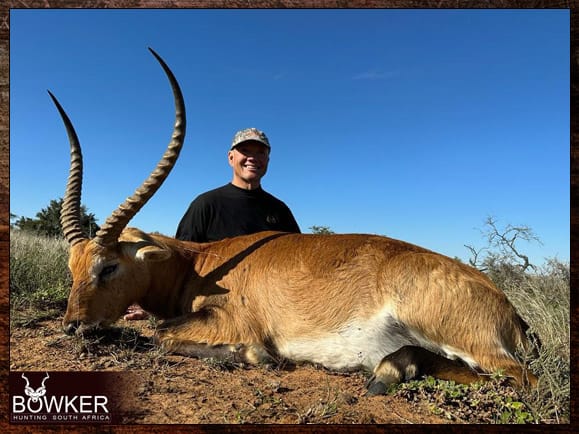
Table of Contents
Red Lechwe Hunting Trophy Hunting Fees – 2025
The average price of a Red Lechwe is $2500. Game hunting packages can include a Lechwe.
Our Red Lechwe price for 2025 is $2500.
All-Inclusive $11,000 Plains Game Package for seven trophies and eight days hunting. (Inclusive of a Lechwe Hunt)
- Sable Antelope
- Red Lechwe
- Impala
- Kudu
- Waterbuck
- Black wildebeest
- Blue Wildebeest
Included in the Lechwe hunting package is a licensed hunting guide. As well as a hunting license and all permits for your hunt in Africa.
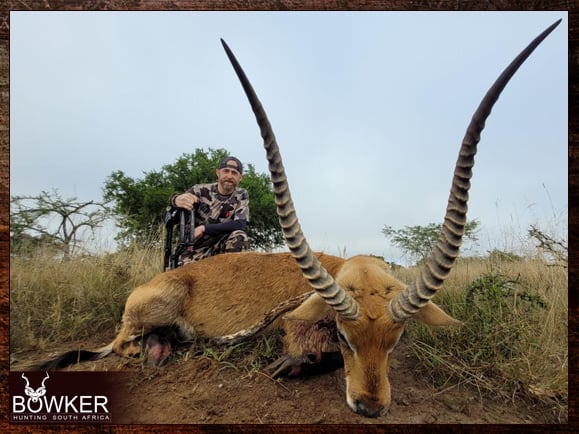

Hunting Red Lechwe in South Africa
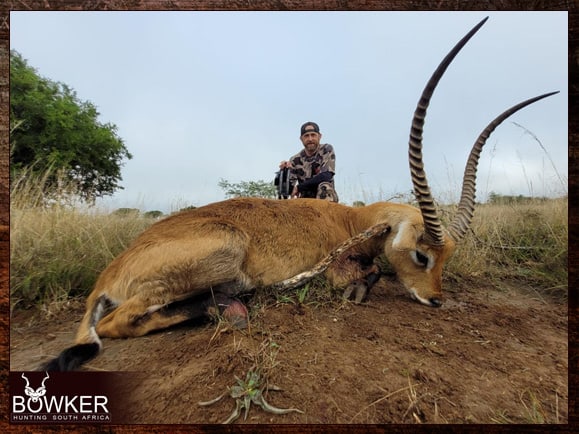
Your Red Lechwe trophy should have an average shoulder height of around 39 inches, weigh about 200 pounds, and have a Horn Length of approximately 24 – 26 inches.
The Safari Club International minimum score for a red lechwe is 58. The trophy is measured by adding the length of each horn and the circumference of the bases.
The Lechwe male is usually of trophy quality at around five years.
The Lechwe is a magnificent trophy and does not occur in abundance in South Africa. However, numbers are good throughout the Eastern Cape.
The lechwe is a medium-sized antelope hunted safari style in Africa.
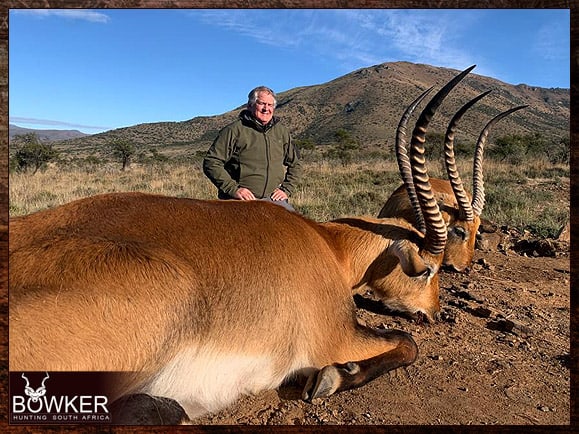

Lechwe is an introduced species on game ranches and is not endemic to the Eastern Cape.
Lechwe game has adapted well to open savannah country. Nick Bowker Hunting has access to several free-ranging herds of red lechwe in the Bedford area. Bow hunting free-range Lechwe is a possibility.
Lechwe has done very well in a free-ranging environment where they are less susceptible to disease from the brown tick.
In a free-ranging environment, they can move and find grazing without going deep in the brush. In high-fenced areas during arid periods, lechwe are forced to go deep into the brush foraging for grazing, where they encounter the brown ear tick. This disease can wipe out the entire herd.
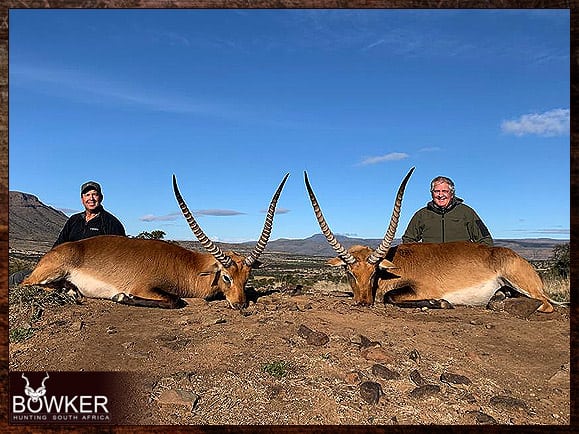
Trophy Judgement and Rifle Caliber for Lechwe Hunting
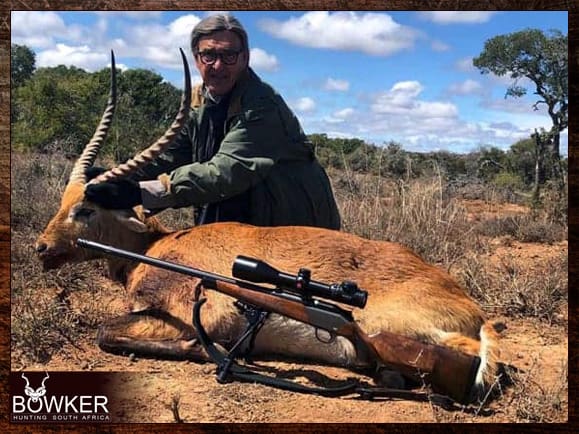
Only the male carries horns, which sweep backward and then curve forward at the horns’ tips, similar to the waterbuck. The lechwe feeds on dry grasses and drinks regularly.
The herd grazes mainly during the early morning and late afternoon, resting in the day’s heat.
We recommend a .30 caliber or, even better, the flat shooting 7mm magnum for Lechwe hunts in Africa.
For those hunters who wish to avoid going through the red tape of bringing a rifle, Nick Bowker has 300 Magnums fitted with suppressors for hunts.
The rifles are mounted with a Swarovski Z8 tactical scopes. Also, we have hand-loaded Hornady ELD-X 200-grain ammunition for all our hunts.

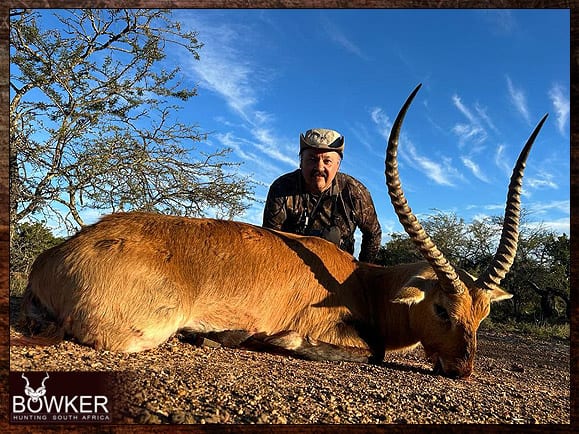

The rifle, including ammunition, is available as part of all hunting packages free of charge for your safari hunt in Africa.
Lechwe can be confused with impala tRed Hartebeest Hunting – All You Need to Know About Hartebeest Hunts to the untrained eye but never the red heartbeest.
The aim point for red lechwe hunting is the standard high heart/lung shot; straight up the foreleg, one-third into the body, and squeeze. Your lechwe should not go far.
When selecting a male to hunt, note the spread of the horns backward and outwards, and tips have opened and hooked forward.
Horns will wear down dramatically with age. Hunters should be mindful of this when hunting Lechwe in Africa.

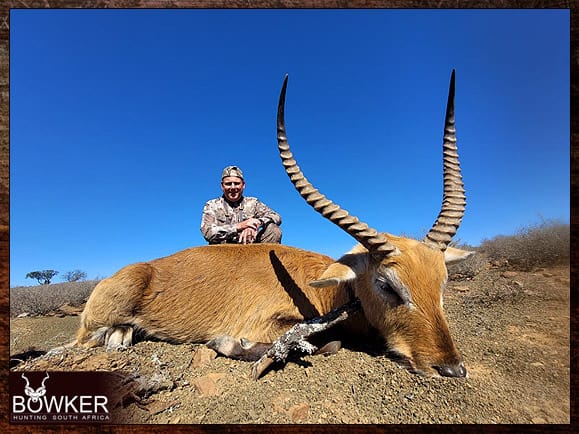
Difference Between a Male and Female for Hunts
Lechwe males have horns, while females do not. In contrast, females are also smaller and can be lighter in color.


Interesting Facts for a Red Lechwe Hunt
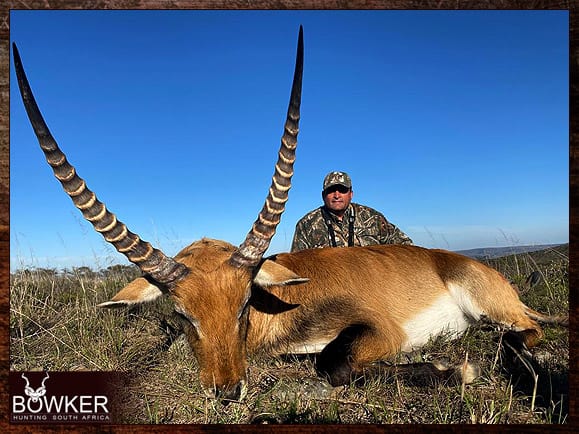
- Four subspecies of these antelopes have been identified in Africa and include:
- The black lechwe is found in the areas of Zambia.
- The red lechwe is found in Zambia, Zimbabwe, Namibia, Botswana, and South Africa.
- The Roberts Lechwe was formerly found in Zambia but is now considered extinct.
- As well as the Kafue Lechwe of Zambia.
- Only the Red subspecies is available in South Africa.
- The lechwe is one of the three antelope species known to form breeding areas with a high population density.
- Inhabiting marshy areas and feeding on mostly aquatic plants, they always utilize knee-deep water for safety and protection against predators.
- Water-repellent substances cover the lechwe’s legs, allowing them to run quickly in knee-deep waters in the Okavango swamps.
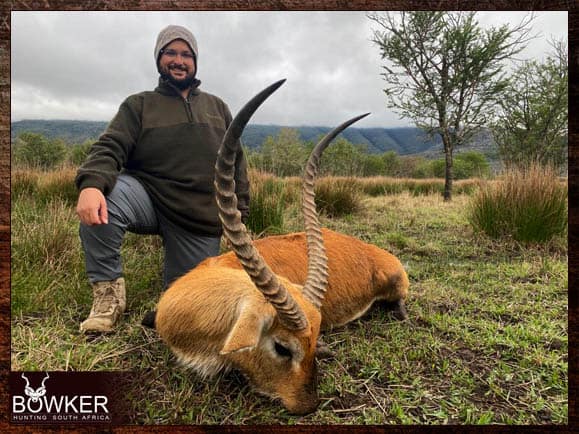
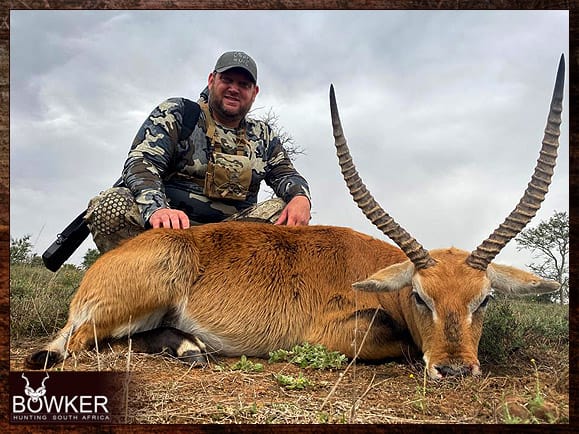
- Males have long spiral-structured horns. Lyre-shaped horns are the signature trademark of a Lechwe trophy. This antelope makes for a magnificent trophy.
- Both sexes have longer hind legs than other antelope species, which is essential for easing long-distance running in marshy soils.
- They are a diurnal animal that lives in large herds comprising thousands of individuals. These herds are surprising of one sex but will mix during the mating season.
- Lechwe has greasy and water-repellent coats, and females have tawny to chestnut coats that resemble one another, though they can have minor marking differences.
- Feeding on aquatic grasses is one of the abundant resources that most other herbivores cannot utilize, and they usually graze on grasses that spring up as floodwaters increase.
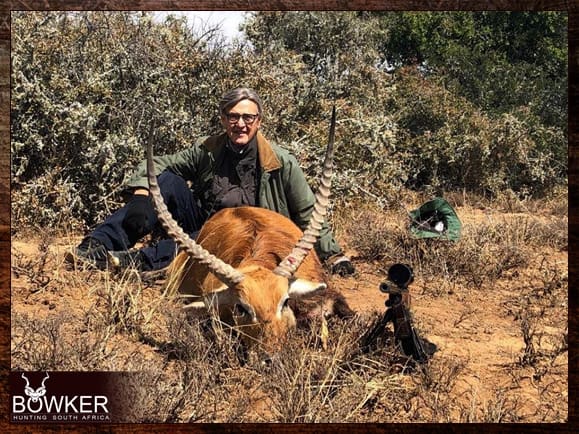
About the Red Lechwe Game
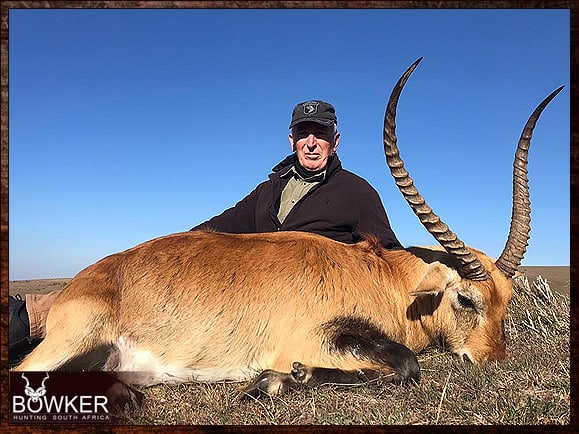
A medium-sized antelope is reddish-yellow and has a darker back than on the flanks and legs.
They also have white on the underpants, with a white band running up the front of the neck to the jaw and characteristic dark markings on the forelegs.
Although this usually varies depending on the subspecies, the males are darker in color than the females.
Their hindquarters are higher and broader than their forequarters, with long necks and short muzzles adapted for swamp feeding.
The shoulders are distinctly lower than the rump, and the body slants forward.
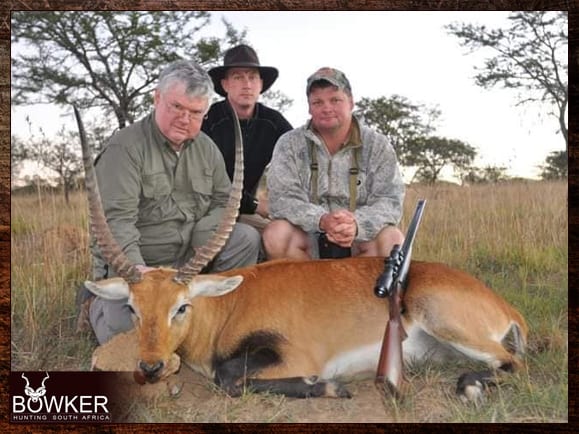
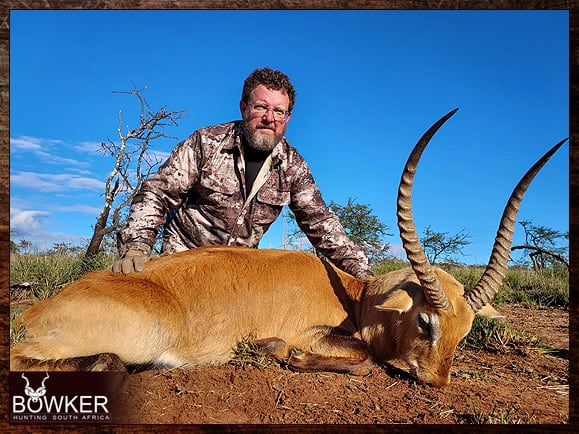
In its natural habitat, lechwe is found in or near the water on shallow flood plains, swamps, and rivers, and on well-watered grasses with feet wet.
Lechwe has also adapted well to the open savannah country. Hunting will nearly always be by spot and stalk.
As a result, red lechwe hunting is in savanna or well-wooded areas.
These animals form small herds of 10-30 animals.
Bachelor herds, nursing herds, and solitary adult males can be distinguished.
A few males establish territories during the mating season.
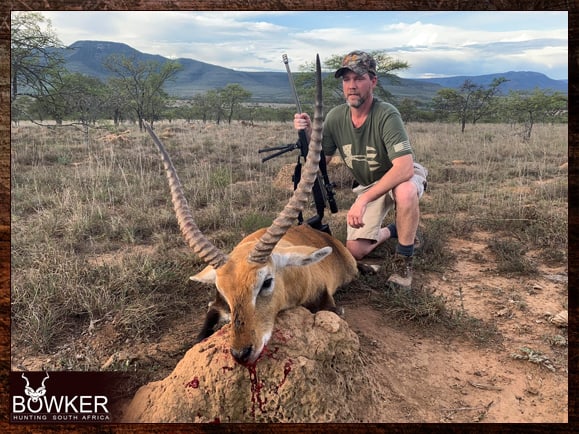
Frequently Asked Questions to Hunt Red Lechwe
How much does it cost to hunt a Red Lechwe?
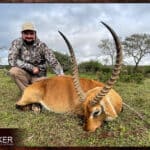
Trophy fees as a standalone Red Lechwe hunt are between $2,500 – $3,000. Daily rates vary between $250 and $500 per day.
Included in the trophy fee is a licensed guide. As well as a hunting license and all permits.
A Lechwe trophy is often included in a Plains game package. Package prices vary from $ 3,000 to $10,000, depending on location and size. Packages include 5 – 7 trophy animals, accommodation, meals, and daily rates.
How to hunt a Red Lechwe?
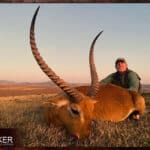
Red Lechwe hunting is in the early mornings and late evenings and spotted from an elevated vantage point in the thick brush and then stalked. Alternatively, hunters use ambush techniques at watering holes or as they move back to cover from feeding.
Where do you shoot a Red Lechwe?
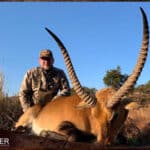
Shot placement must be in the bottom third of the animal directly above the front shoulder. This will ensure a heart or lung shot. Avoid head and neck shots, which are high-risk.
What is a trophy, Red Lechwe?
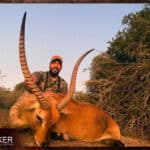
Red Lechwe trophies have a Horn Length of approximately 24 – 26 inches. The minimum qualification score under Safari Club International for a Red Lechwe is 58. Add the length of each horn and the circumference of the bases to get your SCI score.
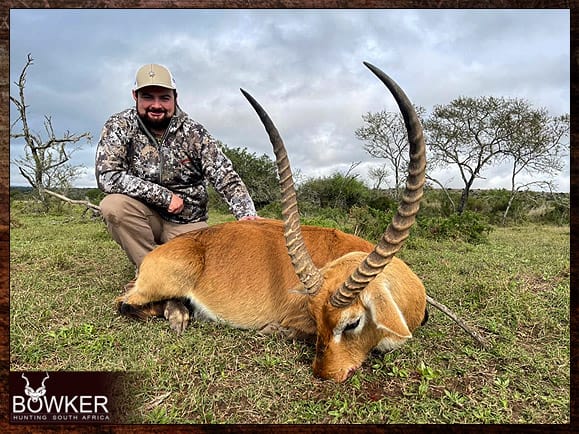
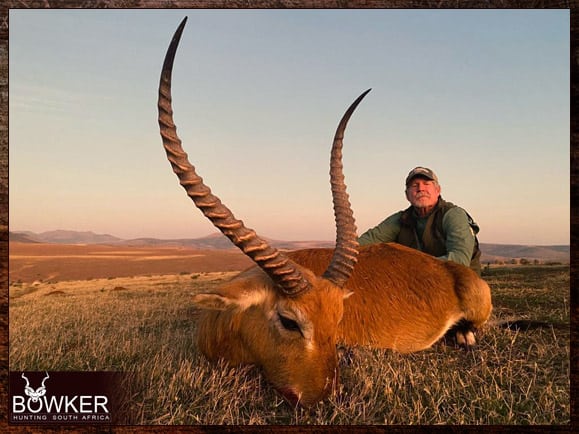
Seasonal Restrictions for Hunters
When can you hunt Red Lechwe in South Africa?

There are no seasonal restrictions on Red Lechwe hunting in the Eastern Cape of South Africa.
How do you judge a Red Lechwe trophy?
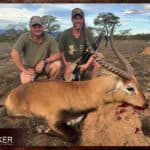
As with all African animals, a thick, heavy, darkened neck is the first sign of maturity and often the most visible maturity characteristic when observing at a distance.
Also, look at the color of the horns. An old bull will exhibit at least two-thirds of the horn as an off-white color.
A good symmetrical shape with smooth tips signifies an old bull and a trophy worth considering.
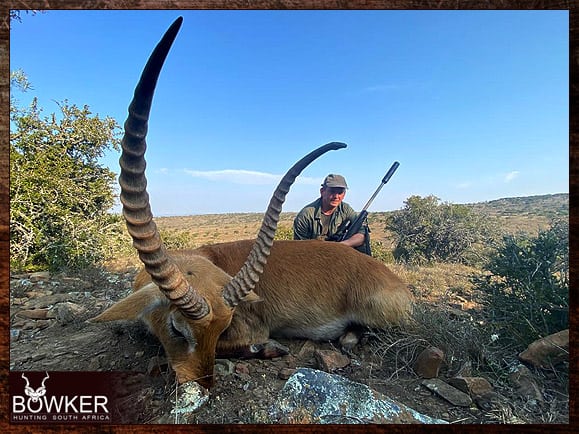
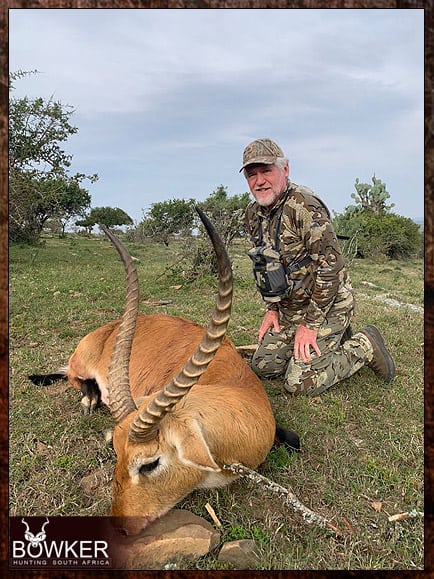
The Red Lechwe in Pictures


